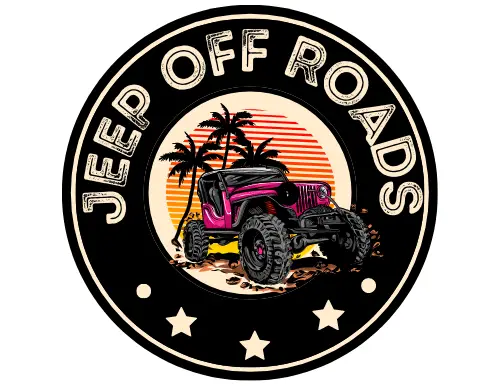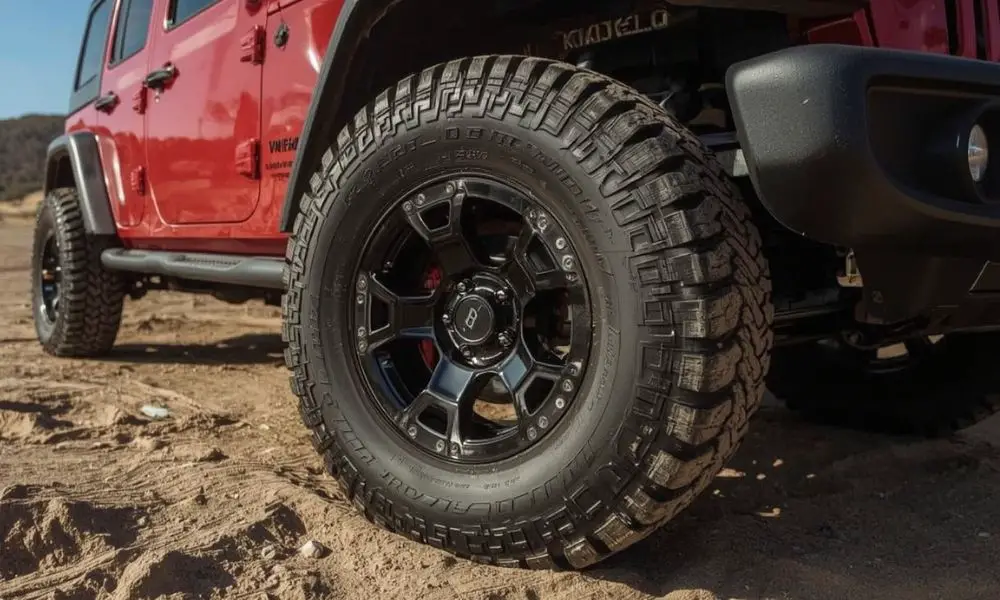Whether you’re upgrading wheels, swapping tires, or just customizing your ride, knowing the Jeep Wrangler wheel bolt pattern is a must. From rugged trail adventures to highway cruising, the wrong bolt fit can spell disaster—damaging your suspension or worse, risking wheel detachment. Most modern Jeep Wranglers, including JL and JK models, use a 5×5″ (5-lug on a 5-inch circle) pattern, while earlier generations like the YJ and TJ used 5×4.5″.
That small difference matters. We’ll walk you through all Jeep Wrangler bolt patterns by model year, how to measure yours correctly, and what else to consider before buying new wheels—including offset, hub bore, and torque specs. Let’s make sure your next wheel setup is safe, sharp, and performance-ready.
What Is a Bolt Pattern, and Why Should You Care?
A wheel bolt pattern refers to the number of lug holes on a wheel and the diameter of the circle they form. For example, a 5×5″ pattern means the wheel has 5 lug holes spaced in a 5-inch circle. It’s not just a technical spec—it directly determines whether a wheel can be mounted on your vehicle.
If you get this wrong, the consequences range from annoying (vibration, wobble) to dangerous (wheel detachment). That’s why understanding your Jeep’s bolt pattern isn’t just good practice—it’s non-negotiable. Even if a wheel “sort of” fits, forcing the wrong pattern can strip threads, damage studs, or compromise handling. You wouldn’t wear shoes that don’t fit—don’t do that to your Jeep.
Jeep Wrangler Bolt Patterns by Model Year
Here’s a breakdown of Jeep Wrangler bolt patterns by generation. Use this as your quick-fit guide:
| Model | Year Range | Bolt Pattern |
|---|---|---|
| YJ | 1987–1995 | 5×4.5″ (114.3 mm) |
| TJ | 1997–2006 | 5×4.5″ (114.3 mm) |
| JK | 2007–2018 | 5×5″ (127 mm) |
| JL | 2018–2025 | 5×5″ (127 mm) |
| Gladiator (JT) | 2020–2025 | 5×5″ (127 mm) |
Note: The 5×5″ bolt pattern introduced with the JK model in 2007 remains the standard for JL and JT models today.
How to Measure Your Bolt Pattern
If you’re unsure of your bolt pattern, here’s how to measure it yourself:
For 5-lug wheels:
-
Use a tape measure or calipers.
-
Measure from the center of one lug to the far edge of the opposite lug (not center to center).
-
This gives you the bolt circle diameter.
Pro Tip:
Use a bolt pattern gauge if available. Or check the back of the rim, your Jeep’s owner’s manual, or even OEM stampings on the hub assembly.
Other Wheel Fitment Factors to Know
Matching bolt patterns is just the beginning. To ensure safety and performance, keep these specs in mind:
Center Bore (Hub Bore)
-
The hole in the center of the wheel that fits over the hub.
-
Hub-centric wheels reduce vibration and ensure precise fit.
-
If the center bore is too large, use hub-centric rings.
Wheel Offset
-
Measured in millimeters: the distance between the wheel’s mounting surface and its true centerline.
-
Affects clearance, suspension performance, and turning radius.
-
Wrangler JK and JL models generally use a +44 mm offset, but lifted setups often need -12 mm or 0 mm offset aftermarket wheels.
Backspacing
-
The distance from the wheel’s mounting surface to its inner lip.
-
Impacts tire clearance inside the fender well.
Torque Specifications
-
Over- or under-tightening lug nuts is a safety risk.
-
Recommended Torque (JK/JL): 130 lb-ft
-
Use a calibrated torque wrench.
Common Mistakes to Avoid When Replacing Wrangler Wheels
Upgrading wheels can boost looks and performance—but many Jeep owners make costly errors. Here’s what to watch out for:
Mismatching Bolt Patterns
-
Trying to fit YJ or TJ wheels (5×4.5″) on a JK or JL (5×5″) will not work without dangerous modifications.
-
Always double-check bolt pattern compatibility when buying used wheels.
Ignoring Offset & Backspacing
-
Installing wheels with the wrong offset can cause tire rubbing, poor handling, or suspension wear.
-
A high negative offset might make your wheels stick out too far, making your ride look “off” and handle worse.
Overlooking Center Bore Fitment
-
If the wheel’s center bore is too large, your Jeep won’t ride smoothly unless you use hub-centric rings.
-
Too small? It won’t mount at all.
Skipping Proper Lug Torque
-
Improper lug nut torque leads to unsafe mounting and potential wheel detachment.
-
Re-check torque after 50–100 miles of driving after a wheel change.
Jeep Wrangler Bolt Pattern – Frequently Asked Questions (FAQs)
Q: What is the bolt pattern on a Jeep Wrangler JL?
Answer: All Jeep Wrangler JL models (2018–2025) use a 5×5″ (127 mm) bolt pattern.
Q: Can I use JK wheels on a JL Wrangler?
Answer: Yes—since both use a 5×5″ bolt pattern. But double-check the offset and center bore to avoid fitment issues.
Q: Do older YJ or TJ wheels fit a JK or JL?
Answer: No. YJ and TJ use 5×4.5″, which is not compatible with the newer 5×5″ bolt pattern.
Q: How do I check my bolt pattern without tools?
Answer: Check your owner’s manual, hub stamp, or inside the driver door frame sticker. Or ask a tire shop to confirm it.
Q: What’s the correct lug torque for Jeep Wrangler wheels?
Answer:
-
JK & JL models: 130 lb-ft
-
YJ & TJ models: Usually around 100–115 lb-ft (refer to your manual)
Final Takeaways: Make Every Bolt Count
Matching the correct Jeep Wrangler wheel bolt pattern is the foundation of any safe and successful wheel upgrade. But don’t stop there—bolt patterns are just one part of a fitment puzzle. Pay attention to offset, backspacing, center bore, and torque specs for a perfect install every time.
Whether you’re heading off-road or just want to turn heads on pavement, a well-fitted wheel setup ensures performance, safety, and longevity. So measure twice, torque right, and roll confidently.
Key Specs Recap
| Generation | Years | Bolt Pattern | Torque Spec |
|---|---|---|---|
| YJ | 1987–1995 | 5×4.5″ | 100–115 lb-ft |
| TJ | 1997–2006 | 5×4.5″ | 115 lb-ft |
| JK | 2007–2018 | 5×5″ | 130 lb-ft |
| JL | 2018–2025 | 5×5″ | 130 lb-ft |
| Gladiator (JT) | 2020–2025 | 5×5″ | 130 lb-ft |

Hello there, this is Thomas Byrd. I am a professional car mechanic who leads a team of junior mechanics in a repair and restoration shop. In the beginning, I used to work for a jeep service center as a basic worker. From there I keep learning, changed my job 2 times and now I am a professional who leads a group of mechanics. Though a have expertise in the jeep, I know very well about all types of cars. To share my knowledge and skills with others I have created this blog website. Whenever I get free time from work I give my time to my blog.

